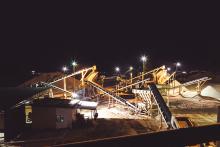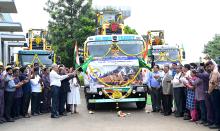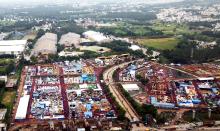
India had a cement production capacity of 545 million tonnes in March 2020, accounting for 8% of global capacity, second only to China, according to the Indian Government agency IBEF (India Brand Equity Foundation). The country’s cement demand is expected to rise to 550 to 600 million tonnes by 2025, driven by an enormous upswing in infrastructure development, new residential housing and industrial construction.
It is estimated that power and fuel account for 50% of the Indian cement industry’s production cost, a percentage very apparent in the minds of leading national cement producers as they set about increasing manufacturing capacity to meet rising demand. Electricity conservation is a key goal in the Indian cement sector, achieved through using automatic Programme Logic Control (PLC)-based systems to run vital electric-powered units like fans and blowers.

On this subject, Vinay Saxena, senior vice president, operations and management at Shree Cement, said: “The advanced PLC-based systems also feature voltage variable frequency drives (VVFD), from ABB, Hitachi and others. VVFD has raised the initial investment costs. However, the newer technology has extensively contributed to energy conservation. The medium voltage drives on 11kva motors come with a much smaller footprint to run the plant’s electrical systems. The other most vital advantage is the easy flow of high levels of currents and minimal transmission losses.”
Speaking about the impressive integrated and non-integrated reduction in cement-plant fuel use, Saxena says: “Most of the larger cement plants are migrating from fifth- to sixth-stage preheaters. This has made the plant suitable to use alternate fuels and raw materials (AFR). The sixth-stage preheating systems have assisted fuel conservation in a bigger way.”
India’s cement producers, including Shree Cement, are also increasingly using waste recovery boilers in their fuel conservation efforts. The boilers capture and use steam to generate electricity to power cement plants. Most Indian cement plants are based on dry-cement producing technology, creating a near-zero wastewater industry.
UltraTech Cement (UltraTech), the flagship company of the KM Birla group, has been one of the Indian cement industry’s front runners in adopting advanced technologies and processes to curtail operational costs. Prasanta Paul, UltraTech’s head of procurement- engineering and projects, said: “We use a heat recuperation system in the cooling mechanism of the plant. Some of the alternative fuels, like pet coke that we use, possess very high levels of calorific value. This allows for better heat recuperation and reduces the wear on some parts.”
With an installed production capacity of 115 million tonnes, up from 70.3 million tonnes about four years ago, UltraTech is the world’s third-largest cement business, excluding China-based companies. The company is engaged in greenfield and brownfield expansions, gaining 14.6 million tonnes of additional capacity by acquiring Century Textiles’ cement business. The closure of some companies, including Reliance Cement, Binani Cement and Emami, has contributed to greater market consolidation.

Major integrated cement-producing entity Wonder Cement, part of the Rajasthan, North India-based R.K. Marble Group, has just completed the second-phase expansion of its Nimbaheda plant in Rajasthan’s Chittorgarh district. To curtail its production costs and create greater plant efficiencies, the company, like UltraTech, uses pet coke to power its cement plants rather than higher-sulphur-containing bituminous coal. Pet coke is also cheaper than other fuels, requires less gypsum, and, as previously noted, offers a higher calorific value (8000kl/kg) than bituminous coal (4000kl/kg).
Wonder Cement has invested in VRM technology from Pfeiffer to refine raw materials used in its cement production. The expanded Nimbaheda facility has also got new Thyssenkrupp equipment for processing and clinker grinding. Furthermore, the latest packaging technology has also been installed at the extended plant. Other auxiliary equipment has been sourced from the best of the industry, enabling the company to attain plant efficiencies and deliver quality cement at competitive prices.
To have extended durability, it is essential that cement particles are uniform during the material’s production. Furthermore, testing must be consistent across all production stages. Wonder Cement has invested in a cross belt analyser. The technology tests every quarried or mined piece of limestone to see if it meets the required quality or size. Later in the cement production process, the firm’s state-of-the-art Thyssenkrupp separator eliminates unwanted cement particles. Finally, Wonder Cement’s robotic laboratory with AQCnet software ensures that the right highly durable cement grade is produced.
Pankaj Agarwal, head of mines at Shree Cement, says that for better production-process-synchronisation and increased plant utilisation, cement producers value the increased digitisation of the production process via solutions from companies including ABB, Siemens, and Schneider.
“Shree Cement has been using GPS to streamline mining activities. This is from the movement of the raw materials like limestone to the crushers and for further movement. Plant optimisation is also achieved through high levels of automation based on fully PLC systems. There is an increased usage of computational flow dynamics model simulations to improve the performance of plant equipment such as kilns, boilers, heat recovery equipment, among others. Closed-circuit television monitors each area of plant operation for safety.”
Another big advancement by Indian cement companies, including Shree Cements, on fuel conservation, while simultaneously improving their Puzzolana Portland Cement (PPC) mix, is their increased fly ash and steel slag usage. Fly ash is popular due to its high bonding properties. This prevents cracks in the PPC after its curing.
Shree Cement’s Vinay Saxena says: “Fly ash possesses higher calorific value, so when it is mixed during cement production, fewer clinkers require to be heated, curtailing carbon footprint.”

For environmental protection, cement plants in India are investing on a major scale in chimney and fugitive dust suppression. For example, J.K. Lakshmi Cement’s Udaipur cement works in Rajasthan has installed an advanced dust-collection system from Thermax. The Thermax bag dust-collection system efficiently collects dust at every emission point through the suction points. The dust collector recirculates the dust in the plant while fine air is passed through the chimney. The new dust-collection system was installed to comply with the state government regulation for environmental protection due to Udaipur airport’s presence close to the processing facility.
The way cement production materials in India are transported is changing. An increasing number of companies are using specialist railway freight wagons, others are turning to more robust bulker trucks to convey certain materials via road. The changes are primarily due to new and evolving cement consumption patterns, both in loose or bulk form. Fly ash is one such raw material increasingly being used by cement producers in line with national and regional government policy.
Aurobindo Mishra, additional general manager of logistics at Mumbai-headquartered JSW Cement, says the utilisation of fly ash in larger volumes by cement producers is due to directives issued to thermal power plant operators not to create environmentally damaging ash ponds. “Given the requirements, there is an evolution of newer variants of BCFCM [bogie cement fluidised – CM is the mechanical code of the Indian Railways] railway wagons to transport fly ash from power plants to the cement plants. These are being preferred for transporting fly ash from power plants to cement companies, covering a lead distance between 100-500 kilometres. They are found to be viable compared to transport by bulker trucks, even with lead distances of 100-200 kilometres.”
A BCFCM railway wagon can be used primarily to transport fly ash and cement in loose condition with assisted gravity discharge through hoppers. The wagon has a 68.7-ton carrying capacity. It is covered with a roof with three hatch-covered inlets for loading.
The wagon features a unique fluidised system. A fluidised system for wagons is a hose work of a special textile design, exclusively for quick and complete discharge in the wagons. The arrangement includes air distribution chambers designed to ensure that fluidisation air is fed evenly across the total cross-section of the wagon. This system provides quick, continuous and complete discharge of the cargo each time and avoids any funnel flow inside.
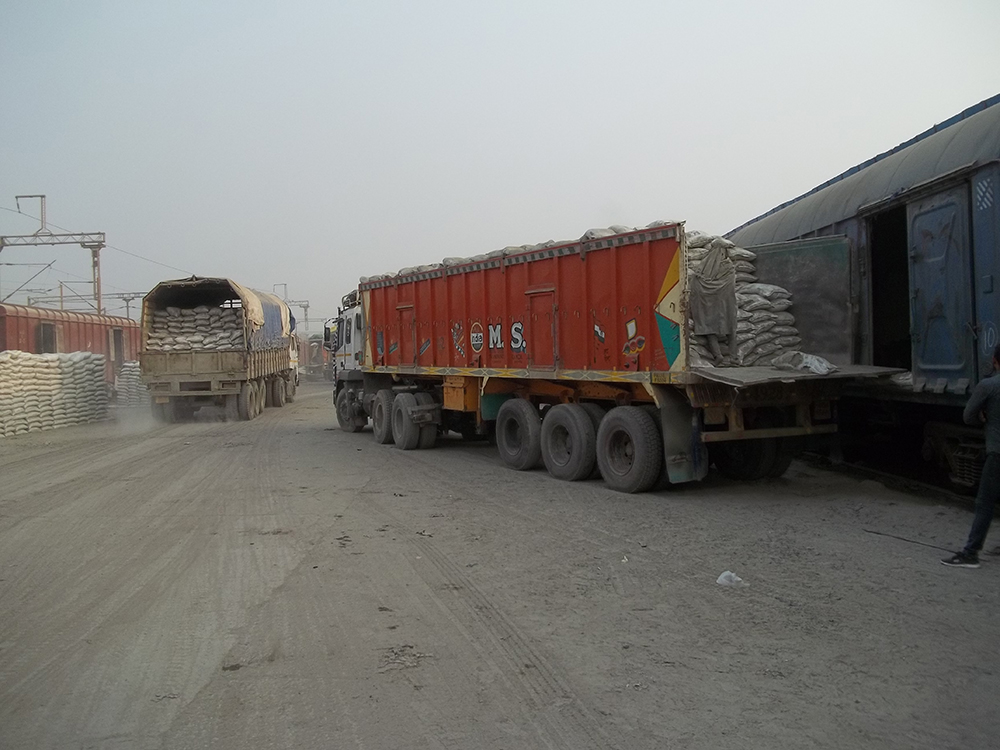
Fly-ash loading is being done from the captive power plants of the Singareni Collieries Company, a subsidiary of the Indian state-owned coal miner, Coal India Limited, for ACC’s cement plants. Fly ash is also being transported from NTPC’s power plants to cement production clusters in Madhya Pradesh and the Korba region of Central India.
For transporting fly ash, ACC and UltraTech Cement have got their own dedicated BCFCM railway wagons. These wagons are also being deployed to transport bulk cement. Bulk cement transported in BCFCM wagons is stored in silos at cement-plant bulk terminals from where they are bagged and transported by road to distributors for end customers.
Venkatesh Ravula, CEO of DCL Bulk Technologies India (DCL), says integrated cement-plant operators in India also transport the bulk of their clinker via the Indian freight rail network. “We have set up, through turnkey support, 36 clinker-loading facilities for wagons spread across 14 integrated cement plants in India. Our systems can be designed to undertake loading of up to four wagons at a time.”
Ravula expects that with planned capacity expansion, cement plants and thermal power plants in India will install more wagon-loading systems to transport cement and fly ash, given the cost-saving benefits.
He adds: “DCL’s high-end 40-year engineering expertise in dust control and dry bulk loading, based on the wagon-loading model, provides complete pre-engineering support. This enables plant owners to decide on bulk silo capacity, outlet locations, and a minimum height of a silo bottom from ground level. This is crucial to designing cost-effective wagon-loading systems.”
DCL’s clinker-loading installations include one at UltraTech’s Rajashree production unit at Gulbarga, Karnataka, south India, another at JK Lakshmi’s Sirohi, Rajasthan site, one at JK Cement’s Mangrol works, an installation at Dalmia Rajgangpur’s site in Odisha, eastern India, and a loading installation for Ramco Cements in Jayanthipuram, near Vijayawada, south India.
In total, DCL has installed ‘hatch adapter’ clinker wagon-loading systems at 14 integrated cement plants in India.
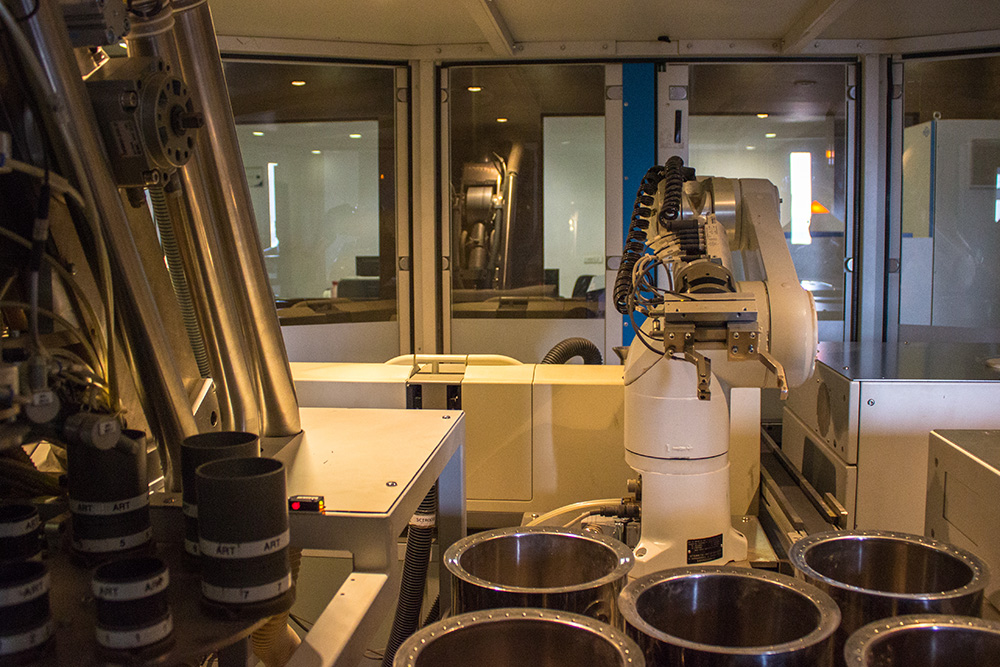
DCL bulk-loading systems solutions are offered as a package. They comprise silo aeration, silo venting, flow-control gates, integral dust extraction systems, horizontal positioning systems, a PLC-based control system, and a telescopic chute with level indicators.
Ravula continues: “Our wagon-loading systems are suited for loading any dry bulk materials into open or enclosed wagons for use on India’s railways. Systems are designed in such a way to suit loading times stipulated by Indian Railways.”
This loading approach, according to Ravula, has revolutionised the clinker bulk loading in rakes as they are designed to load dust-free and are operation- and maintenance-friendly. This concept was first introduced in India by DCL in 2008 at M/S Rajashree Cement, replacing DCL’s earlier conventional bulk-loading system.
DCL is a 100% subsidiary of DCL USA. It has a global presence through its dust control and bulk-loading solutions for clinker, cement, fly ash, alumina, coal, and other dry bulk material-handling solutions, serving India, the Middle East, Africa and Southeast Asian markets. Headquartered in Michigan, DCL USA caters for North America, South America, and European market customers.
Buoyed by the rising need to transport fly ash and cement in bulk form, Braithwaite & Co, a production entity of India’s Ministry of Railways, has developed its own BCFCM wagons.
According to Yatish Kumar, chairman and managing director of Braithwaite & Co: “The directives of India’s Union Government to thermal-powered plants to discard dumping its coal ash in ash ponds to prevent natural degradation and the ready availability of cement companies as buyers of fly ash for cement productions, augurs well for the demand of BCFCM wagons. The changing consumption pattern of cement away from the production centres, necessitating cement producers to move the cargo in bulk form for ready-mix concrete, also adds to the BCFCM wagons’ demand potential.”

UltraTech’s vice-president of logistics, Arun Salvi, warns of some challenges that need to be overcome to ensure greater use of wagons to transport fly ash used in cement production. “A great deal of coordination is needed between cement companies and power plants as many power plants are scattered in India. Another very important factor is the need to standardise a railway wagon model. This would enable its usage across all users of these rakes. This is important because storage-silo design depends on the wagon’s design. Differences in wagons could lead to loading issues with the end-user of these rakes. There will also be a need for proper coordination by the [Indian] railways. The greater use of these wagons is viable from an economy-of-scale perspective.”
Shree Cement’s Vinay Saxena shares similar views. “There is higher availability of waste materials, which can be used as alternative fuel for Indian cement production in India. However, concerted initiatives between the Government and consumers need to ensure the sustained availability of the waste materials. Further, there need to be scientific processes for segregating waste materials. Besides, there must be waste-treatment plants set up through public-private partnership to make it suitable for usage.”


